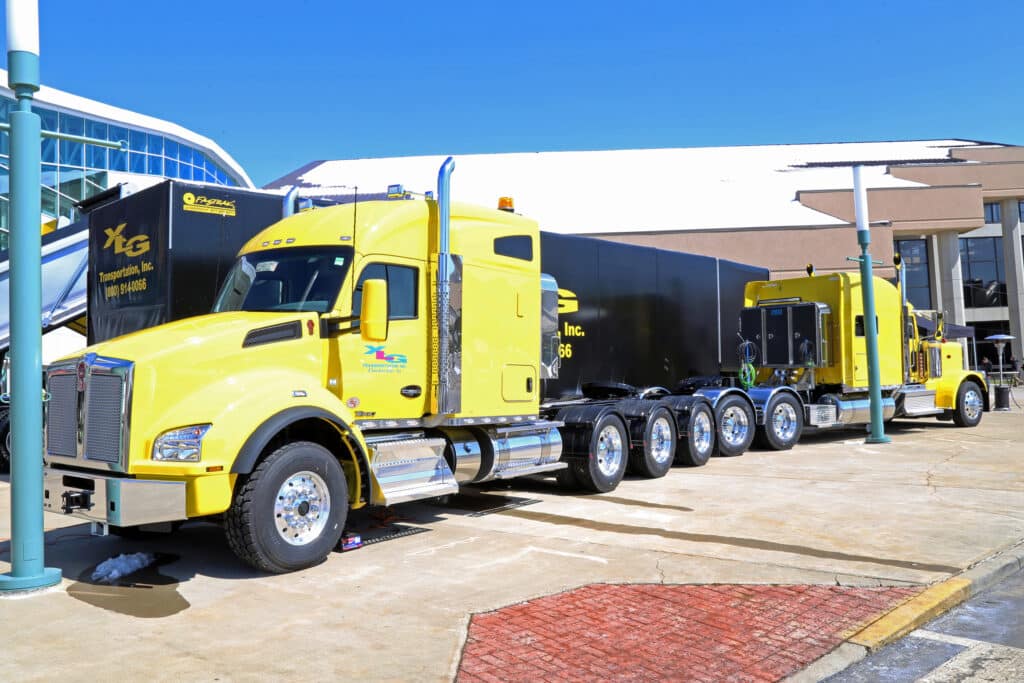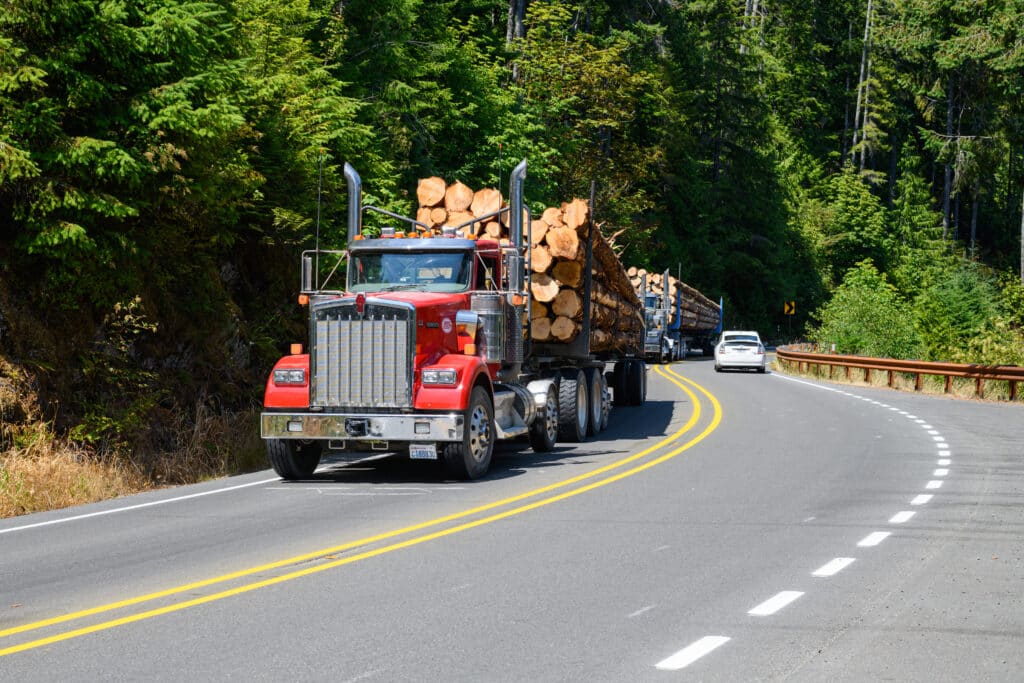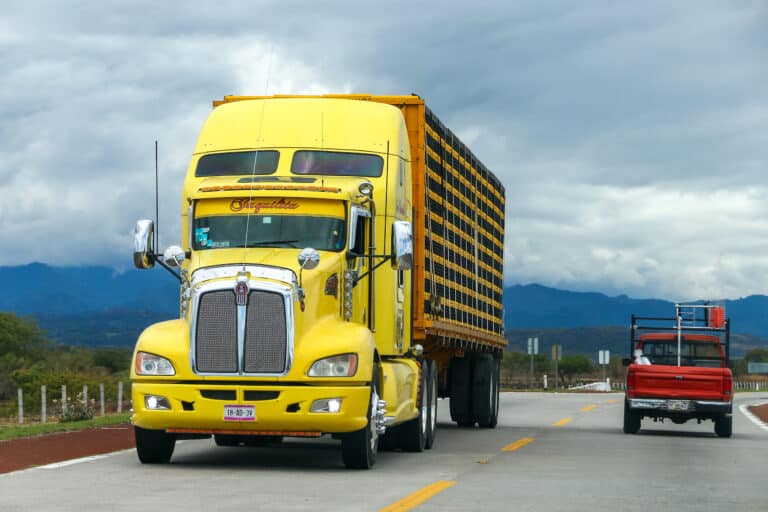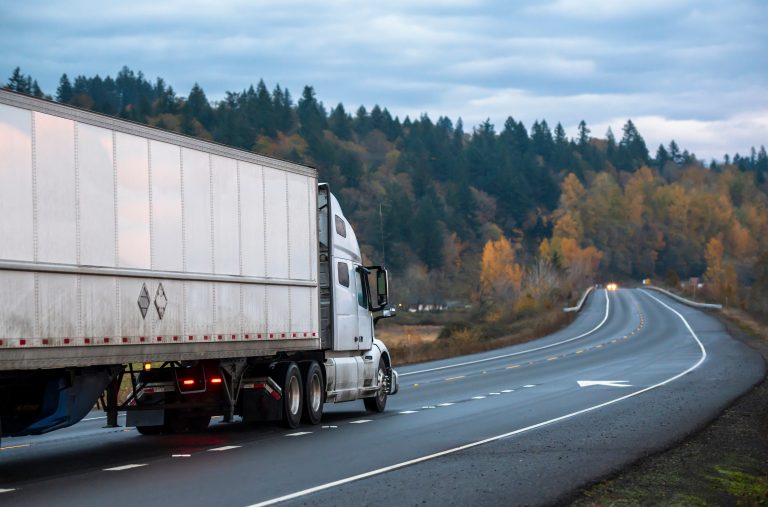Driving a commercial motor vehicle (CMV) across the United States involves more than just steering a wheel – it requires a deep understanding of the intricate road rules, particularly compliance with federal hours of service (HOS) regulations. In this article, we will delve into the fundamentals of HOS compliance, exploring who must follow these rules, the specifics of HOS regulations for CMV drivers in the US, the necessity for quality electronic logging devices (ELDs), and the distinctions between HOS regulations in the US and Canada.
Do you have any questions? Talk to ELD Advisor: 650-405-3372 or Request Callback
What Are the HOS Rules for CMV Drivers in the US?
To ensure safety and compliance, CMV drivers must adhere to a set of HOS rules. These rules are enforced by the Federal Motor Carrier Safety Administration (FMCSA) and it is essential for truckers to understand and follow them to avoid fines and maintain profitable operations. Here’s an overview of the essentials:
- Maximum driving hours. Drivers are allowed to drive a maximum of 11 hours after 10 consecutive hours off-duty.
- 14-hour window. Drivers are not permitted to drive beyond the 14th consecutive hour after coming on duty, following 10 consecutive hours off-duty. This includes driving and non-driving work-related activities.
- Rest breaks. Drivers are required to take a 30-minute break after 8 hours of driving.
- Maximum on-duty hours. Drivers are allowed to be on-duty for a maximum of 14 hours after coming on duty, following 10 consecutive hours off-duty.
- Weekly driving limit. Drivers are limited to 60/70 hours on duty in 7/8 consecutive days. They can restart a 7/8 consecutive day period after taking 34 or more consecutive hours off-duty.
Exceptions include adverse driving conditions, special rules for oilfield operations, and emergency declarations, each offering limited flexibility in specific circumstances.
Who Must Follow HOS Rules?
In the United States, the commercial vehicle drivers hours of service regulations apply to CMV drivers involved in interstate commerce. This includes drivers of trucks, buses, and other large vehicles used for business purposes. Specifically, drivers must follow HOS rules if their vehicle:
- Has a gross vehicle weight rating (GVWR) of over 10,000 pounds.
- Is designed or used to transport more than 8 passengers (including the driver) for compensation.
- Is designed or used to transport more than 15 passengers (including the driver) and is not used for compensation (such as school buses).
- Is used to transport hazardous materials in quantities that require placarding.

Who Needs an ELD to Keep HOS Records?
ELDs are essential tools for accurately recording a driver’s driving and duty time, ensuring compliance with HOS regulations. Drivers who keep HOS records, or records of duty status (RODS), are required to use electronic logging devices if their vehicle:
- Is involved in interstate commerce.
- Is a CMV as defined by federal regulations. This includes vehicles with a GVWR of over 10,000 pounds, vehicles designed or used to transport more than 8 passengers (including the driver) for compensation, vehicles designed or used to transport more than 15 passengers (including the driver) and not used for compensation, and vehicles used to transport hazardous materials in quantities requiring placarding.
However, some drivers and vehicles are not required to use ELDs and can continue to use paper logs or logging software, including:
- Short-haul exemption. Drivers who operate within a 150 air-mile radius of their work reporting location are allowed to use time cards instead of elogs.
- Drive-away-tow-away operations. Drivers transporting a vehicle as part of a shipment are exempt if the vehicle driven is part of the shipment.
- Pre-2000 exemption. Vehicles manufactured before the year 2000 are not required to use ELDs.
- Occasional use exemption. Drivers who use paper logs no more than 8 days within any 30-day period do not need electronic logbooks.
- Agricultural exemptions. Certain agricultural operations are exempt from the mandate during planting and harvest seasons.
It’s important for drivers and carriers to be aware of these categories and ensure they meet the specific criteria outlined by the FMCSA to qualify for exemption from the ELD requirement.
Common HOS Violations and How to Avoid Them
Compliance with hours of service regulations is crucial for safety and avoiding costly penalties. Understanding the most common violations can help drivers and fleet managers take proactive steps to prevent them. Let’s discuss some frequent HOS violations:
Form and Manner Violations
These occur when logs are incomplete or contain errors in basic information. Drivers must ensure all required fields are completed accurately, including name, date, vehicle number, and carrier information.
False Logs
Intentionally falsifying records is a serious violation with severe consequences. This includes manipulating driving time or deliberately misrepresenting on-duty status.
Exceeding Daily Driving Limits
Driving beyond the 11-hour limit after 10 consecutive hours off-duty is one of the most common violations. Drivers must carefully track their hours and plan routes accordingly.
14-Hour Rule Violations
Operating a commercial vehicle beyond the 14-hour window after coming on duty is frequently cited during inspections. Remember that this window includes all on-duty time, not just driving.
Missing Required Rest Breaks
Failing to take the mandatory 30-minute break after 8 cumulative hours of driving is easily overlooked during busy schedules.
Incomplete or Missing RODS
Drivers must maintain complete and current records for the previous 7/8 consecutive days.

Prevention Strategies
Carriers can reduce the risk of violations by implementing preventative measures. For example:
- Implement reliable ELD solutions. Using a dependable elog system automatically tracks driving time and provides alerts when approaching limits, significantly reducing the risk of violations.
- Comprehensive driver training. Ensure all drivers thoroughly understand HOS regulations and know how to properly operate the system.
- Regular log audits. Fleet managers should conduct routine reviews of driver logs to identify patterns or issues before they become violations.
- Plan routes strategically. Account for potential delays, traffic conditions, and available rest areas when planning trips to avoid situations where drivers might feel pressured to exceed limits.
- Create a compliance culture. Foster an environment where safety and compliance take priority over delivery schedules, emphasizing that no load is worth risking violations or compromising safety.
- Use pre-trip planning. Drivers should map out their trips in advance, identifying appropriate stopping points that align with required rest periods.
By understanding these common violations and implementing preventive measures, carriers can significantly improve their compliance record, avoid costly fines, and enhance overall fleet safety.
Achieving Compliance with HOS247 Electronic Logbooks
Keeping pace with evolving regulations is non-negotiable in the world of trucking. Outdated ELD systems could lead to noncompliance issues, potentially causing drivers to be sidelined. At HOS247, we have been at the forefront of providing reliable electronic logging devices and a top-rated logbook app. Our commitment includes regular updates to our HOS247 Android and iOS apps, aligning them with the latest version of the HOS rules. By staying current with these regulations, we empower drivers and fleet managers to operate confidently, without the risk of unexpected compliance challenges. With HOS247, you can trust that your ELD solutions are always up-to-date and compliant with the latest industry standards.

Multilingual Customer Support
At HOS247, we understand the importance of clear communication. Our dedicated customer support team speaks multiple languages, including Spanish and Russian. Regardless of your preferred language, we ensure effective assistance and support every day of the week.
Intuitive User-Friendly Software
Our ELD system offers a user-friendly interface for Android and iOS devices. The app design ensures effortless navigation, allowing drivers to manage logs with ease. Fleet managers can access the online portal from any internet browser and access all the necessary information to oversee operations and improve the workflow.
Dependable Hardware Replacement Warranty
We stand by the quality of our hardware. With HOS247, you benefit from a one-year hardware replacement warranty. In the unlikely event of any issues, we will promptly replace the device without an additional cost.
Flexible Plans and No-Contract Policy
Every business is unique, and we recognize the need for flexibility. Whether you prefer a monthly or yearly subscription, you have the freedom to choose. Plus, we uphold a no-contract policy, giving you the flexibility to modify your plan as your business evolves without being tied to long-term commitments.
Trial Period
Take advantage of our two-week trial period. It’s an opportunity to experience the efficiency, accuracy, and user-friendliness of our ELD system. Test it in your real-world operations, and if it doesn’t meet your expectations, you can return it hassle-free, ensuring complete satisfaction and confidence in your choice.
How to Choose the Right ELD Solution
Selecting the appropriate electronic logbook is a critical decision that impacts daily operations, compliance, and driver satisfaction. Here’s a comprehensive guide to finding the right fit for your fleet’s needs. Key factors to consider include:
- FMCSA compliance. First and foremost, ensure the ELD is listed on the FMCSA’s registry of self-certified devices. This verification means the device meets the technical specifications required by law.
- Hardware reliability. Look for durable hardware that can withstand the demanding environment of a truck cab. Connection stability is crucial — devices that frequently disconnect can lead to compliance issues and frustrated drivers.
- User-friendly interface. Drivers need an intuitive system that doesn’t create additional work. Complex interfaces lead to resistance and potential errors.
- Installation process. Consider how easily the device can be installed across your fleet. Some solutions offer plug-and-play installation, minimizing downtime and the need for technical expertise.
- Support quality. Responsive, knowledgeable support is essential, especially during the implementation phase or when drivers encounter issues on the road. Look for providers offering multilingual support and extended hours.
- Additional features. Beyond basic compliance, evaluate what other benefits the system offers. GPS tracking, IFTA reporting, and vehicle diagnostics can provide additional value and operational improvements.
- Contract terms. Avoid long-term contracts that lock you into a system that may not meet your expectations. Flexible options allow you to adapt as your needs change.
- Total cost of ownership. Consider all expenses, including hardware costs, monthly service fees, installation, and potential hidden charges. The cheapest option isn’t always the most cost-effective in the long run.
- System reliability. Research the provider’s track record for system uptime and performance. Frequent outages or technical issues can disrupt operations and compromise compliance.
- Training and onboarding. Evaluate the resources available for driver training and fleet integration. Comprehensive support during implementation leads to better adoption and fewer complications.
Questions to Ask Providers
- How frequently is your software updated to match changing regulations?
- What is your average response time for support issues?
- Can you provide references from carriers similar to our size and operation?
- What happens if hardware malfunctions during operation?
- How does your system handle cross-border hours of service rules?
By evaluating these factors and asking the right questions, you can select an ELD solution that not only ensures compliance but also enhances your fleet’s efficiency and driver satisfaction.
US and Canada HOS Rules

Understanding the disparities between US and Canadian HOS regulations is crucial for cross-border operations. Here’s a comprehensive table outlining the differences between HOS regulations in the US, the Canadian southern provinces and the Canadian northern territories:
| Aspect | US Regulations | Canada South Regulations | Canada North Regulations |
| Driving Time Limit | 11 hours within a 14-hour on-duty window | 13 hours within a 16-hour on-duty window | 15 hours within a 15-hour on-duty window |
| Rest Breaks | 30-minute break after 8 hours of driving | No specific mandatory rest break requirements, but must take an 8-hour break | No specific mandatory rest break requirements |
| Off-Duty Hours | At least 10 consecutive hours off-duty | At least 10 consecutive hours off-duty, with a minimum 8-hour off-duty break | At least 8 consecutive hours off-duty |
| Weekly Limits (7 Days) | Up to 60 hours in a 7-day period, or 70 hours in an 8-day period, followed by a 34-hour restart period | Up to 70 hours in a 7-day period | Up to 80 hours in a 7-day period |
| Cycle Options | Cycle 1: 70 hours in 7 days, followed by a 36-hour reset period. Cycle 2: 120 hours in 14 days, with a required 72-hour reset period. | Cycle 1: 70 hours in 7 days, followed by a 36-hour reset period. Cycle 2: 120 hours in 14 days, with a required 72-hour reset period. | Cycle 1: 80 hours in 7 days, followed by a 36-hour reset period. Cycle 2: 120 hours in 14 days, with a required 72-hour reset period. |
| Splitting Off-Duty Time in Sleeper Berth | Drivers can split 10 hours into two periods, no less than 2 hours each. | Drivers can split 10 hours into two periods, no less than 2 hours each. | Drivers can split 8 hours into two periods, no less than 2 hours each. |
| Personal Conveyance (PC) Limitations | No distance limits, but must be used for personal reasons only. | Limited to 75 km (46.5 miles) of PC per day. Must note PC on logs with odometer readings. Cannot conduct any work-related tasks during PC. | No distance limits, but must be used for personal reasons only. Cannot conduct any work-related tasks during PC. |
It’s crucial for drivers and carriers operating in both countries to be aware of these differences and comply with the specific regulations of the region they are operating in. Truckers should also be aware that federal rules and state or provincial rules coexist in the trucking industry. Federal regulations create consistent standards for trucks traveling between states, promoting safety and fair competition.
On the other hand, states and provinces have their own rules for carriers that operate within their borders. This flexibility allows states to adapt regulations to their unique needs, such as different road conditions. States also enforce the federal rules within their territories. For more detailed information, it’s advisable to consult the official websites of the FMCSA in the US and Transport Canada in Canada.

Beyond Compliance: Using ELD Data for Business Improvement
While electronic logbooks are primarily implemented for regulatory compliance, the data they generate provides valuable insights that can transform fleet operations and drive business growth.
Operational Efficiency
Fleet managers can analyze historical trip data to identify patterns and opportunities for more efficient routing. By recognizing frequent delays or detours, they can develop alternative routes that save time and fuel, improving overall operational performance.
ELD systems capture objective measures of driving behaviors, including speed patterns, idle time, and harsh braking events. This information helps identify both exceptional performers and drivers who might benefit from additional coaching, leading to improved safety and efficiency across the fleet.
With access to historical data on similar routes, dispatchers can provide more precise delivery time predictions. This improves customer satisfaction and allows for better scheduling of loading and unloading resources, reducing wait times and delays.
Comprehensive data on vehicle usage patterns helps optimize fleet size and distribution. Fleet managers can ensure assets are neither underutilized nor overworked, maximizing return on investment while maintaining appropriate capacity for business needs.
Cost Reduction Opportunities
By tracking idle time, speed patterns, and route efficiency, fleets can identify and address sources of excessive fuel consumption. Even small improvements in this area can yield significant savings across a fleet, directly impacting the bottom line.
Regular analysis of mileage data and engine diagnostics allows for proactive maintenance scheduling. This reduces the likelihood of costly roadside breakdowns and extends vehicle lifespan, providing substantial long-term cost benefits and improved reliability.
Many insurance providers offer reduced rates for fleets that demonstrate safe driving practices and regulatory compliance through elog data. These premium reductions can offset the cost of ELD implementation and provide ongoing financial benefits.
Automated record-keeping drastically reduces the time spent on paperwork and compliance documentation. This allows staff to focus on value-adding activities rather than administrative tasks, improving overall productivity without adding personnel.
Strategic Business Insights
Comprehensive data on utilization rates and driver availability helps identify whether fleet expansion is justified or if existing resources can be better allocated. This ensures investments align with actual business needs rather than perceived requirements.
When integrated with business systems, ELD data can help determine which routes, regions, or customers are most profitable by providing accurate cost-of-service information. This allows for more strategic business development and resource allocation.
Fleet managers can compare performance metrics across different drivers, vehicles, and routes to establish internal benchmarks and improvement targets. This creates a culture of continuous improvement based on objective data rather than subjective assessments.
Elog data enables management to replace gut feelings with factual information when making key business decisions about equipment purchases, hiring needs, or service expansions. This data-driven approach reduces risk and improves outcomes for significant business decisions.
Implementation Strategies
To maximize the business value of ELD data:
- Establish clear metrics aligned with business objectives.
- Develop regular reporting processes that highlight actionable insights.
- Create a feedback loop where data insights lead to operational changes.
- Involve drivers in understanding how data can improve their work experience.
- Consider integration with other business systems for comprehensive analysis.
By viewing electronic logbook implementation not just as a compliance requirement but as a business intelligence opportunity, carriers can leverage this technology to gain competitive advantages while satisfying regulatory demands.

Conclusion
Navigating the complex landscape of hours of service regulations and ELD compliance is an essential aspect of modern trucking operations. As we’ve explored throughout this article, understanding who must follow HOS rules, the specific requirements in different regions, and how to avoid common violations is fundamental to maintaining compliant and efficient fleet operations.
The right electronic logbook does more than just satisfy commercial vehicle hours of service regulations — it becomes a valuable tool that enhances safety, improves operational efficiency, and provides data-driven insights for business growth. HOS247 stands out in this regard, offering a solution that combines reliable hardware, user-friendly software, multilingual support, and flexible terms designed specifically for the needs of today’s trucking professionals.
For carriers operating across borders, staying informed about the differences between US and Canadian regulations is crucial. The ability to adapt to these requirements while maintaining consistent record-keeping practices is greatly simplified with a versatile electronic logging system.
Beyond basic compliance, the strategic use of ELD data represents a significant opportunity for forward-thinking fleet operators. From optimizing routes and improving driver performance to reducing costs and making more informed business decisions, the insights generated through electronic logging can transform operations and create competitive advantages.
As the industry continues to evolve and regulations potentially change, partnering with an electronic logbook provider committed to regular updates and responsive support ensures long-term compliance and operational success. With HOS247’s no-contract policy, two-week trial period, and comprehensive feature set, carriers can confidently implement a solution that meets their current needs while providing flexibility for the future.
Ultimately, the goal is not just to comply with regulations but to leverage technology to create safer, more efficient, and more profitable trucking operations. By choosing a quality elog solution and maximizing its capabilities, carriers can turn a compliance requirement into a valuable business asset.

I’ve co-founded, built and managed several transportation-related businesses. Now, I’m a founder and CEO of HOS247 – an AI Transportation Platform for trucking companies, freight brokers and other logistics operations. We are transitioning old-style operations to technology-advanced logistics entities and help them to grow their businesses. ELDs (electronic logging devices), fleet tracking and management 2.0 combined with AI-powered dispatch tools.












The FMCSA has mandated the use of electronic logbooks for commercial vehicles, including both trucks and buses. With the elog mandate in full effect, the most common question among truckers is where to buy a truck log book that achieves

In the world of commercial trucking, staying on top of regulations is key to smooth operations. The electronic logging device (ELD) mandate, enforced by the Federal Motor Carrier Safety Administration (FMCSA), has reshaped how drivers and carriers track hours of

In trucking, staying on top of commercial driver’s licenses (CDL) regulations is crucial for both drivers and carriers. These regulations are necessary to the industry. They help improve safety on our highways and maintain professional standards for truckers. This article